1. internettwo
1.1. one single corporation owns the data that define social identity for two billion people today — and one single person, Mark Zuckerberg, holds the majority of the voting power in that corporation.
1.2. By the time a new generation of coders began to tackle the problems that InternetOne left unsolved, there were near-limitless sources of capital to invest in those efforts, so long as the coders kept their systems closed. T
1.3. creating a single database capable of tracking the interactions of hundreds of millions of people — much less two billion — was the kind of problem that could be tackled only by a single organization.
2. internetthree
2.1. protocollabs
2.1.1. IPFS allows users to download a page simultaneously from multiple locations and includes what programmers call “historic versioning,”
2.1.1.1. blockchain
2.1.1.1.1. Bitcoin offered a kind of proof that you could create a secure database — the blockchain — scattered across hundreds or thousands of computers, with no single authority controlling and verifying the authenticity of the data.
2.1.1.1.2. the work of maintaining that distributed ledger was itself rewarded with small, increasingly scarce Bitcoin payments.
2.1.1.1.3. ethereum
2.1.1.1.4. ico
2.1.1.2. identity, self sovereign
2.1.1.2.1. blockstack
2.1.1.2.2. uport
2.1.1.2.3. solid
2.1.1.3. but will it work, and why again would we want it?
2.1.1.3.1. cryptonetworks are only part of it
2.1.1.4. tension between networks and blockchains
2.2. concrete examples you can use
2.2.1. made possible by blockstack
2.2.1.1. browser, fork of chromium
2.2.1.2. references
2.2.1.2.1. A Secon Internet, Coming Soon, Courtesy of the Blockchain
2.2.1.2.2. One Startup's Vision to Reinvent the Web for Better Privacy
2.2.1.2.3. Blockstack raises $52 million to build a parallel internet where you own all your data
2.2.1.2.4. ‘New internet’ looks to keep user data away from tech giants and bypass China censorship
2.2.1.2.5. Beyond the Bitcoin Bubble
2.2.1.2.6. BACK TO THE FUTURE: THE DECENTRALIZED WEB
2.2.2. called DApps
2.2.2.1. such as
2.2.2.1.1. Graphite (docs, spreadsheets)
2.2.2.1.2. DTube
2.2.2.1.3. casa (homesharing)
2.2.2.1.4. afia (personal health)
2.2.2.1.5. coins (wallet°
2.2.2.1.6. DotPodcast
3. programming languages
3.1. lisp
3.1.1. os, applications, meta-programming, dialects...
3.1.1.1. neal stephenson
3.1.1.2. in the beginning was the command line
3.1.2. liam proven
3.1.2.1. new tech often discards previous advancements
3.1.2.1.1. kwetsbaarheid
3.1.2.2. end of the file system
3.1.3. open source
4. sources for the 'new internet'
4.1. Chris Dixon on Medium
4.2. Steven Johnson in The New York Times
4.3. Irving Wladawsky-Berger
4.4. Philip Sheldrake on Medium
5. blockchain
6. internetone
6.1. Email is still based on the open protocols POP, SMTP and IMAP; websites are still served up using the open protocol HTTP; bits are still circulated via the original open protocols of the internet, TCP/IP, GPS
6.2. they did not create a secure open standard that established human identity on the network. Units of information could be defined — pages, links, messages — but people did not have their own protocol: no way to define and share your real name, your location, your interests or (perhaps most crucial) your relationships to other people online.
7. things to study
7.1. opensource
7.1.1. intro to linux
7.1.1.1. commandline
7.1.1.2. community organization
7.1.1.2.1. html css javascript
7.1.2. python
7.1.3. php and sql
7.1.4. quid javascript and node.js
7.2. history of internet
7.2.1. the new media handbook
7.2.2. coursera
7.3. collaboration
7.3.1. howard rheingold course
7.3.2. science of happiness
7.3.2.1. mindfulness
7.3.2.2. meditation
7.3.2.3. connection
7.3.2.4. greater good
7.3.2.4.1. labor
7.3.2.5. counseling
7.3.2.6. Science of well-being
7.3.2.7. u.lab leading from the emergent future
7.3.2.8. time well spent
7.3.3. future of internet
7.3.3.1. http vs https
